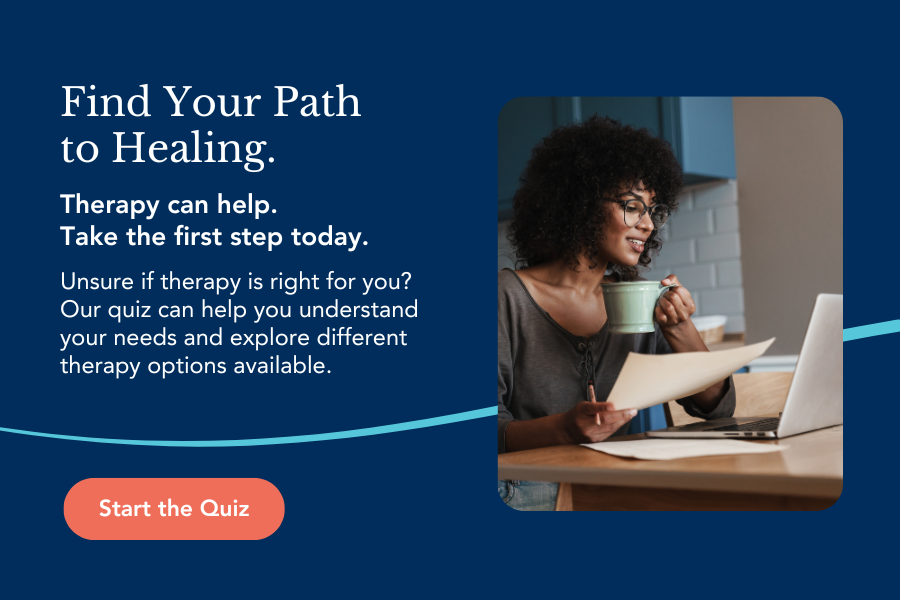Daily Habits to Manage Workplace Anxiety
The Nystrom & Associates provider consulted for this article on workplace anxiety is Stephanie Rafn, LPCC and Outpatient Therapist.
It’s normal to feel some nervousness before a big day at work. Whether you’re taking on a new project, giving a presentation, or preparing for a performance review, work milestones can bring about some uncomfortable feelings. But if you’re feeling anxious about work on a day-to-day basis, you may be experiencing something called “workplace anxiety.”
Workplace anxiety is the regular feeling of unease, nervousness, and preoccupation with something about your work or the environment you work in. For many people, this is a part of their daily life and makes work even more challenging for them. So how can you overcome it?
In this post, we’ll cover some daily habits you can adopt today to reclaim your day from workplace anxiety and help you feel more confident in your workplace.
Related: Relieving Back-to-School Stress & Anxiety
Build Awareness Around Workplace Anxiety Triggers
The first step to managing workplace anxiety is to identify when it comes up. This requires some mindfulness, which is just another way of saying becoming aware of your thoughts, feelings, surroundings, and everything else that encompasses your experience in the present moment.
You can start to build awareness by asking yourself, “What does this anxiety feel like?” For many people, it includes sweating, racing thoughts, and tension in the body. The next question you can ask yourself is, “When did this feeling start?” Did it begin when you saw a co-worker, opened an email, or joined a meeting?
For a while, just practice bringing some awareness to these feelings, and try to note what sparked them. Once you’ve developed awareness to these workplace anxiety triggers, you can start bringing change.
Related: What is Social Anxiety?
Challenge Thoughts About Workplace Anxiety
The first change you can introduce is to start challenging your anxious thoughts. Once you have awareness, you can recognize an anxious thought when they pop up. These thoughts can fuel workplace anxiety. Try to notice statements that can’t factually be proven, such as:
- “I’m going to make a fool of myself.”
- “I never do anything right.”
- “I bet they’re all talking about me.”
- “I’m a loser.”
These thoughts are just that – thoughts. They’re not facts, and they’re likely untrue. Try to recognize those types of thoughts and reframe them to more realistic statements:
- “I could make a mistake, but it won’t be the end of the world.”
- “I do many things right; I just make mistakes sometimes. Everyone does that.”
- “I’m feeling nervous that my co-workers are talking and laughing about me, but that is not very likely.”
- “I’m capable of a lot.”
Notice that these aren’t affirmations or even positive statements. They’re neutral, balanced, and fact-based. That’s really all you need to combat an anxious thought. Anxiety lives in the future, forecasting failure, and in extremes. It’s a thought pattern based on fictional assumptions. Shine the light of some simple facts on them, and they’ll be revealed for what they really are: just thoughts.
But you may notice that even while you’re thinking logically about an anxious thought, the anxiety is still in your body. Let’s talk about how to calm that bodily feeling.
Related: How to Stop Catastrophic Thinking
Practice Stress-Relieving Activities
Releasing anxious energy from your body can be done in many ways, and everyone must find what works best for them. Some people find taking three deep breaths calms them right down, while others prefer to engage in vigorous exercise. Many people also benefit from taking a walk, journaling, or even doodling.
All these activities will help you use the energy in your body rather than let it feed your workplace anxiety-related thoughts.
Related: Breathing Exercises for Anxiety & Stress
Manage Your Time
Once you’ve established some helpful things you can do when you start feeling overwhelmed, try to restructure your workload and schedule in a way that works for you (if you can). One of the things many people find helpful for overcoming workplace anxiety is using a checklist or a planner. Even writing some of the day’s tasks on a piece of paper at the beginning of your day can help you feel like you’ve got a goal and some control over your work.
Of course, much of your schedule and work will be out of your control, and that’s okay. Accept the things you can’t change and practice using the skills we discussed above to calm your anxiety about the unknown.
But, if there are areas where you do have control, try to plan out your day according to what works best for you. What time of day are you most productive? What types of meetings drain you more than others? What might you need after a stressful meeting to decompress and get back to baseline? Questions like these will help you navigate managing your time.
On another note, many people experience workplace anxiety because they feel like they aren’t doing enough. If you’re feeling like this, try to keep a running list of your “wins” and other things you’ve accomplished. You can look back at these the next time you feel inadequate or that you’re not doing a good job.
Related: Are Fake Rules Running Your Life?
A Word from Nystrom & Associates on Workplace Anxiety
In general, anxiety is not something that’s easy to tackle on your own. If you need help, please reach out! Contact us at 1-844-NYSTROM or request an appointment online. We’ll help you find a therapist or psychiatrist who specializes in workplace anxiety.





